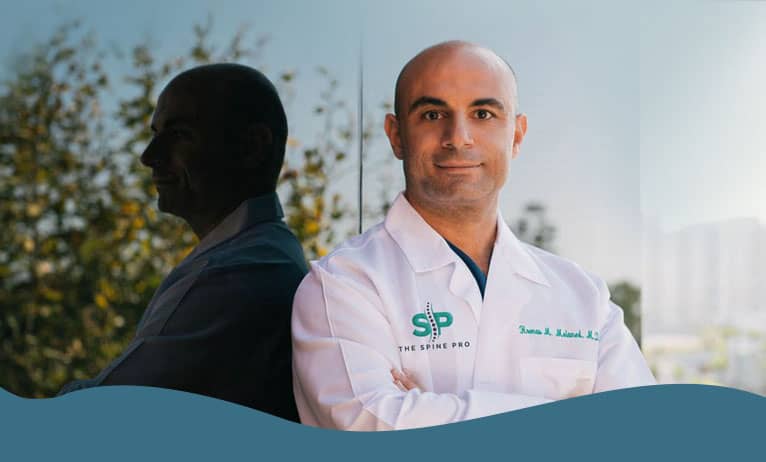
Is my pain caused by a bulging disc?
Your back pain may be caused by a bulging disc. It is a spinal intervertebral disc that has a protrusion on its side which may be irritating nearby facet joints or impinging on the spinal cord. Many confuse a herniated disc with a bulging disc. With a bulging disc, there is no break in the annulus fibrosis, the rigid ring that contains the soft center of the disc which is called the annulus pulpous. Many patients may have a bulging disc but feel no pain. It all depends on the proximity of the bulge to adjacent nerves and bones. A bulging disc can cause narrowing of your spinal canal that can result in segmental spinal stenosis. With a herniated disc, there is a break or herniation in the rigid disc which allows the content of the disc to leak out.
What causes a bulging disc?
Not surprisingly, age is often the primary driver of bulging discs. Fifty-seven percent of Americans over sixty and 20 percent under sixty have at least one bulging disc. The condition occurs gradually. An annular tear or fissure in the soft center of the intervertebral disc may form over time and exert pressure on the rigid outer ring which may deform and bulge slightly. The bulge will irritate adjacent nerve and skeletal structures.
How is a bulging disc diagnosed?
The good news about a bulging disc is that the condition usually does not require surgery and can be treated non-invasively.
Your doctor will physically examine your spine and inquire about any problems that you may be having regarding urination or having a bowel movement. Don’t be embarrassed. This information will help rule out issues relating to your spinal cord. X-rays are routinely taken to assess the overall condition of the spine. A common test for identifying a bulging disc is an MRI. For more details, your doctor may request a Myelogram and a CT scan.
What are the usual treatments for a bulging disc?
Dr. Melamed will provide you with a conservative, holistic treatment plan for your bulging disc that may draw from integrative medicine, chiropractic medicine and acupuncture. He may suggest simple exercises and behavioral changes. For example, if you are a smoker, the time to stop has arrived. Dr. Melamed may suggest non-opiate pain treatments to relieve your pain. In some cases, simple movement exercises or yoga can help.
If the pain from your bulging disc persists despite your best efforts to deal with them conservatively, surgery may be your best option. Dr. Melamed will review all your surgical options and thoroughly explain his Opiate-Free Surgery and Pain Management System which has helped hundreds of patients recover from back pain. Dr. Melamed specializes in the full range of microdecompression surgeries which help eliminate pressure caused by bulging or herniated discs.
A microlaminotomy is a minimally invasive procedure for treating a bulging disc. The surgeon makes an extremely small incision and uses specially-designed tools to open your lamina to provide more room for the bulging disc. For a larger bulging disc, a microdiscectomy or removal of a disc may be your best surgical option. In some cases, spinal fusion may be required. Microsurgical techniques reduce pain, curb inflammation, cut infection rates and provide faster recovery times.
Non-Surgical Care and Management
Find out more today!
Click on the “Make An Appointment” button at the top of this page, or call Dr. Melamed’s office for more information. Today is a great day to start the journey to a life without back pain. Call us at 424-21-SPINE.



